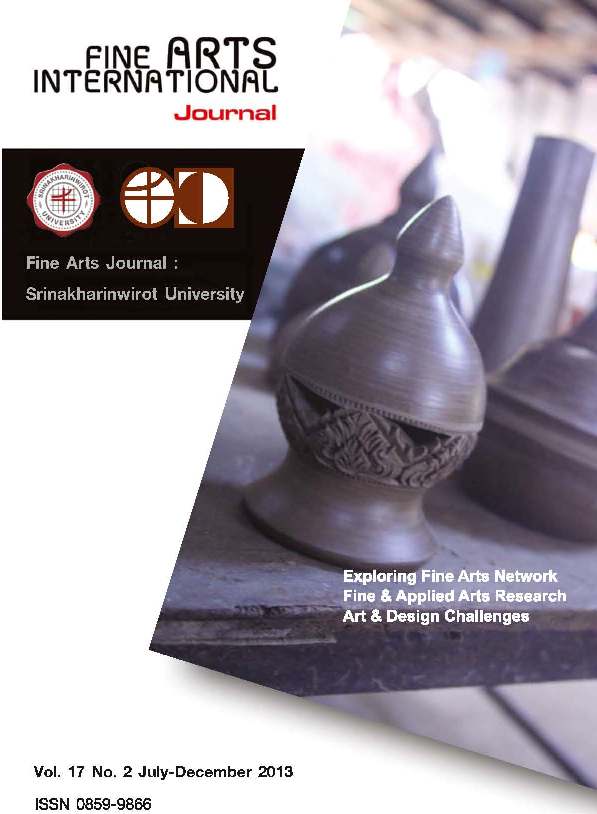The Inheritance of the Ranad Thum Solo Pieces of Master Phum Baputawat
Keywords:
solo pieces of Ranad Thum, Master Phum BaputawatAbstract
The objectives of the qualitative research title “The inheritance of the Ranad Thum solo pieces of Master Phum Bapuyawat” were to study the significance of Master Phum Bapuyawat’s biography, his works, and the musicians involved in the inheritance of his Ranad Thum solo, to study his teaching methods for the Ranad Thum solo, and to study the melodic verses of his Ranad Thum solo in eight pieces, i.e., Kagmon, Sarathee, Cherdnork, Nokkamin, Thayae, Groundnai, Arhia, and Mayong using the research methods of research, analysis, synthesis, interpreting from factual information, studying documents obtained from the field, in-depth formal and informal interviewing, and participating observation. The research results are as follows:
Master Phum Bapuyawat is a famous musician who had proficiency in both theoretical and practical skills and knowledge since he was young. His masters were all experts in Thai classical music such as Master Pui Bapuyawat (his father), Luang Kanlayanamittawas, and Master Thongdee Chusut.
The teaching methods of Master Phum Bapuyawat began with melody progression by playing Homeromg Chao, Homerong Yen, and Sepha pieces. When the learners are skillful and well-experienced, they will be taught the solo pieces based on each learner’s potential and ability. Therefore, the inheritance of the solo pieces requires the selection of the learners and the solo pieces accordingly.
The Ranad Thum solo piece of Master Phum Bapuyawat is recognized in the Thai classical music profession from the various patterns of the melodic verses. From the analytical result of these eight pieces, the outstanding characteristics of all eight pieces are (1) the solo piece begins with the hidden melodic verses, (2) the hand patterns differentiate from the general ensemble performance, (3) the melodic verses require high- skill musician, (4)various melodic verses are created from the main melody without redundancy, (5)some parts of the melodic verses are specific wherein there is no melodic line in alignment with the melody, some verses do not have the melodic line at beginning of the phrase, and some verses do not have the melodic line at the end of the phrase, (6) the techniques of fast beat insertion are introduced, (7) the melodic verses are created and repeated in the same phrase, (8) the same melodic verses are created in every pattern, (9) the harmony of the melodic verses is emphasized and (10) the conflicting melodic verses are usually followed by the soothing melodic verses.






